The St. John’s River
Florida Aqua: Artistic Reflections on Water
A Digital Exhibition
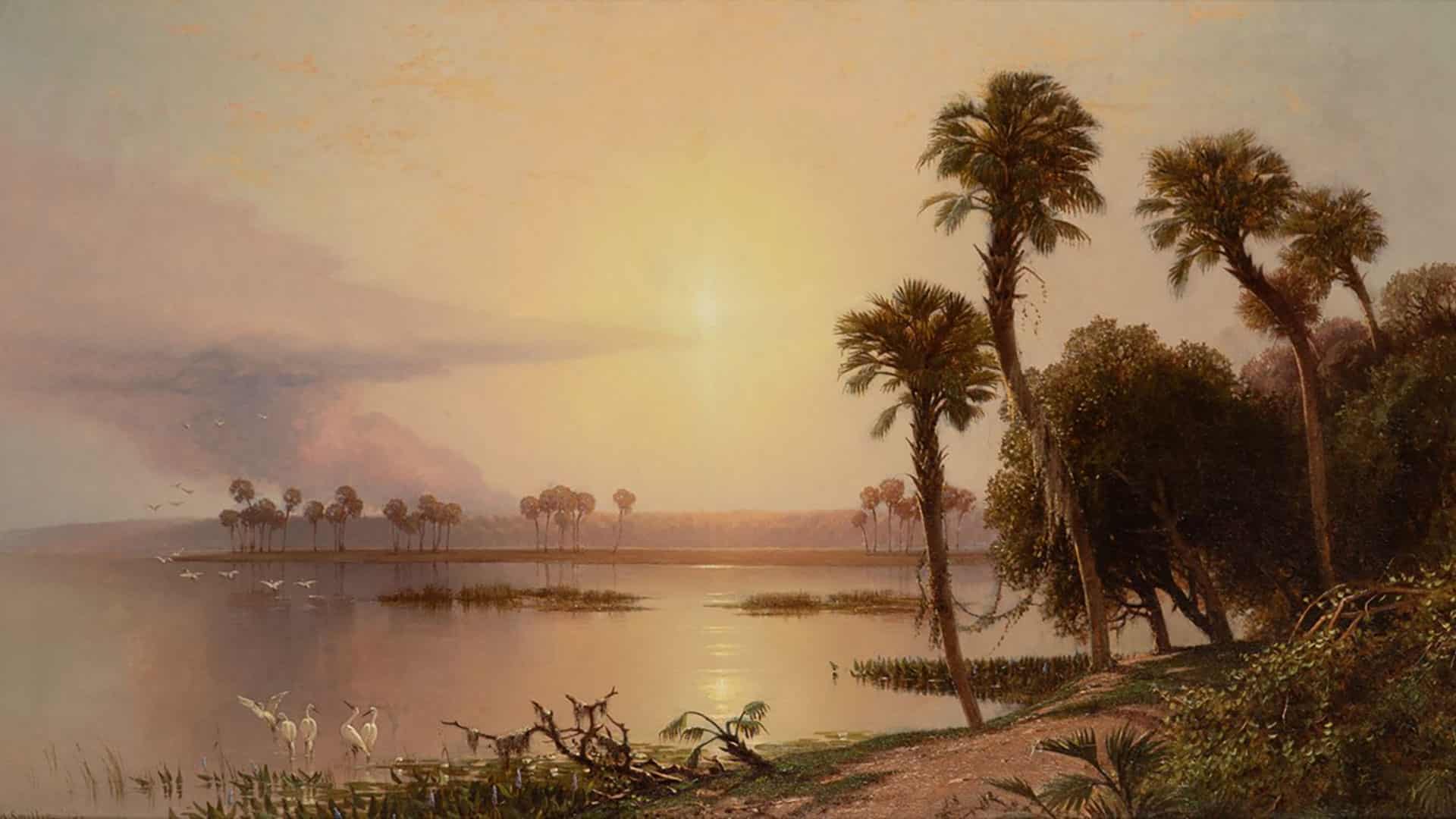
Introduction
As the longest river in Florida, the 310 miles (500 km) St. Johns River flows north from Lake George in Volusia County to the river’s mouth at Mayport in the Jacksonville area, crossing or bordering twelve counties. Receiving nourishment from various water systems such as the Ocklawaha River and Silver Springs, the St. Johns River links these tributaries together, which creates attractive landscapes and lively ecosystems. The abundant native animals and vegetation in this ecosystem have long supported local residents and attracted visitors from the north. River sightseeing with steamboats began before the Civil War (1861-1865). The St. Johns River and its related tourism have also promoted the development of cities in north Florida. In the mid and late nineteenth century, Jacksonville and nearby St. Augustine became popular winter resorts for the rich and famous. Visitors arrived by steamboat and later by railroad seeking recreation as well as physical and mental health. Millionaires like John Murray Forbes (1813-1898) and Henry Flagler (1830-1913) invited artists to enjoy the charming landscape and climate of the lower St. Johns River and supported their careers. Artists such as William Morris Hunt and Laura Woodward produced artworks capturing the St. Johns River landscape. The area’s beautiful landscape and thriving tourism also attracted artists like Durett Woodward Stokes to build their careers in Florida and create artworks for their clients.
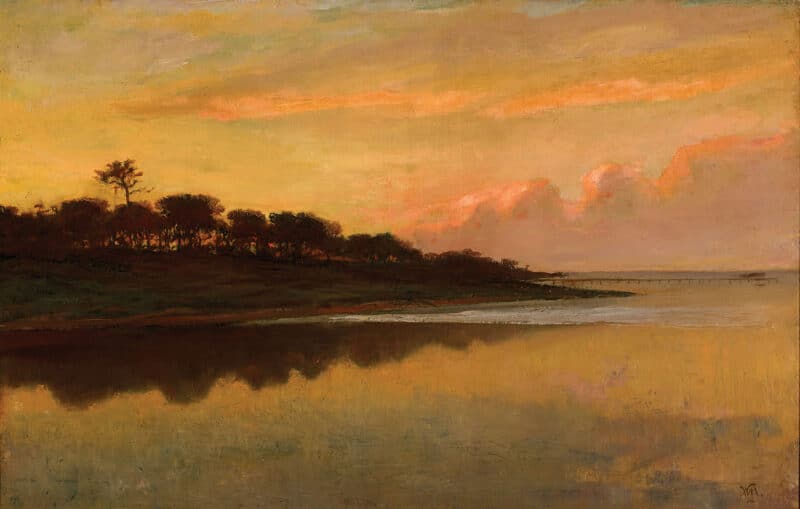
View of the St. Johns River
William Morris Hunt
As one of the most influential American painters of the nineteenth century, William Morris Hunt achieved success as a portraitist in Boston. However, the Great Boston Fire of 1872 destroyed his studio and its contents, which led to his mental breakdown. In 1873, with the invitation of the Boston financier John Murray Forbes (1813-1898), Hunt took a trip to Jacksonville and the St. Johns River. Florida’s warm climate and poetic landscapes offered him mental healing and artistic inspiration. This painting probably records a view near Magnolia, a thriving river port town in southern Wakulla County and depicts a dark wooded promontory extending into the St. Johns River. The sunset sky with pinkish and yellowish clouds reflecting on the calm river bathes the lonely peninsula in a warm light.
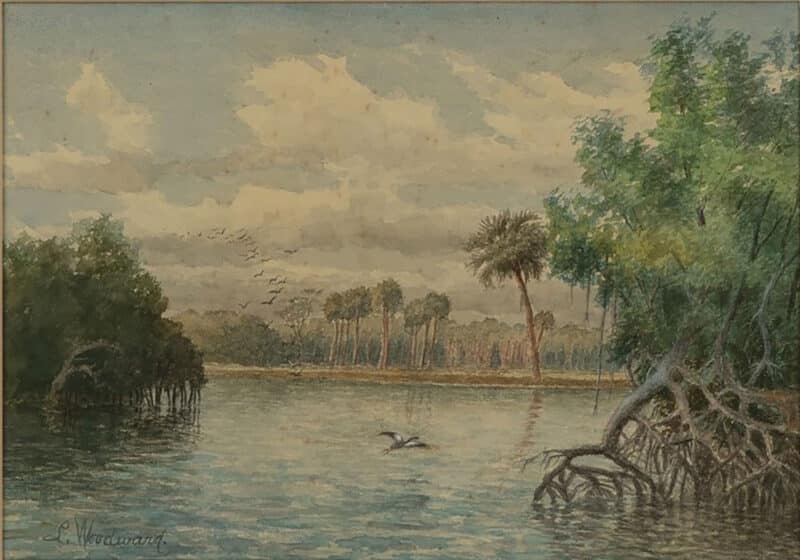
St. Johns Cove
Laura Woodward
Known as a successful watercolor artist in the Northeast, Laura Woodward came to St. Augustine in the 1880s. She spent winters in her studio at the Ponce de Leon Hotel as a guest of millionaire Henry Flagler, the hotel’s builder. Flagler provided studios for many guest artists like Martin Johnson Heade and Laura Woodward who contributed to a thriving art colony catering to his wealthy northern clients. Woodward painted landscapes around the St. Augustine area until she moved to Palm Beach in the 1890s. In this watercolor, an anhinga skims over the water between mangroves. In the background, a line of birds rises from the lush riverside toward the clouds.
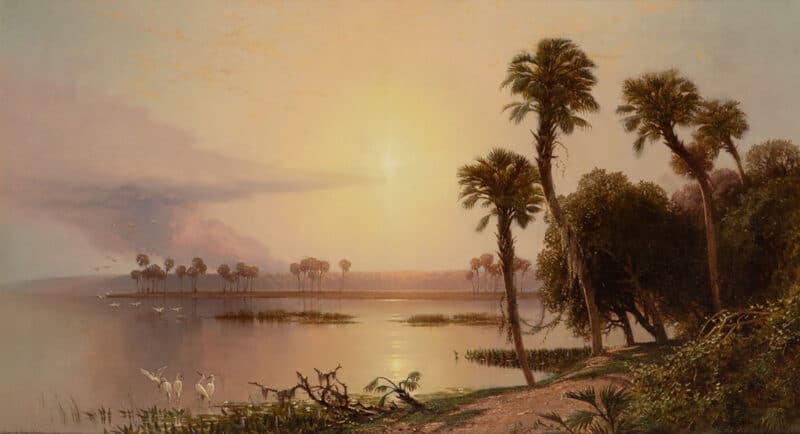
A Florida Lagoon, St. Johns
George Henry Smillie
As a son of noted engraver James Smillie, George Henry Smillie received formal artistic training from a young age. This serious study in a rigorous academic style explains the realistic depiction with clear outlines and topographical interest found in Smillie’s paintings. He visited Florida in 1874, and painted a few oils and watercolors dated to the winter and early spring of that year. In this painting, Smillie captured an open view of the lagoon and the surrounding riverside along the lower St. Johns River. The dazzling sunshine splashes on the mirror-like calm water. A row of white pelicans dynamically skims the lustrous surface of the water and flies into the sky from the shoal in the middle ground.
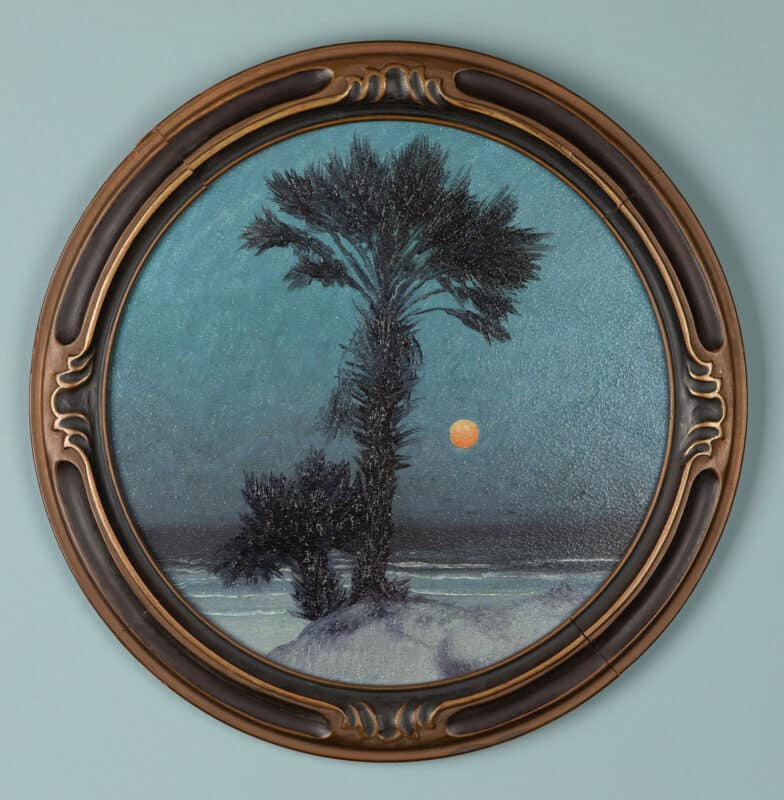
Palm Tree, Pablo Beach
Durett Woodward Stokes
Known as an important figure in Florida art, Durett Woodward Stokes directed the establishment of Jacksonville’s first art gallery, Southwood Galleries, in 1917. Stokes was active as an artist specializing in Florida landscapes for more than ten years until the collapse of Florida real estate markets and the Great Depression ended his career in in the region. In this painting, a tranquil palm tree stands on a sandy beach against the mysterious dark blue sky as a tiny but bright sun rises in the distance. As indicated in the title, the setting is Pablo Beach, known as Jacksonville Beach after 1925. The beach is located a few miles south of Mayport where the St. Johns River empties into the Atlantic Ocean.

St. Johns River, Jacksonville, Florida
Walter Whitcomb Thompson
Born in South Carolina, Walter Whitcomb Thompson studied art at the University of Florida, later establishing painting schools in New York, California, Oklahoma, Florida, Georgia, and South Carolina. In the mid and late nineteenth century, under the influence of the French Barbizon school, landscape painters began to focus on the expressive use of oil paints, not only to record an image but also to evoke a mood. In this small drawing in pastel, crayon and graphite, Thompson used various tones of blue and green to depict the impression of deep water as well as the lively vegetation along the St. Johns River.

Hunting Alligators
Frederick Carl Frieseke
Born and raised in Owosso, Michigan, Frederick Carl Frieseke’s family came to Jacksonville when he was seven, staying for four years. Decades later, between 1921 and 1926, Frieseke created a series of watercolors and 16 oil paintings based on memories and impressions of his childhood spent in Florida. This painting likely captures an early memory of his cousin, a taxidermist who sold stuffed alligators to northern tourists. Frieseke filled the scene with heavy and dense native vegetation. Two Black hunters prowl in the native grasses to stalk an alligator, which sneaks into the water in the foreground of this scene.
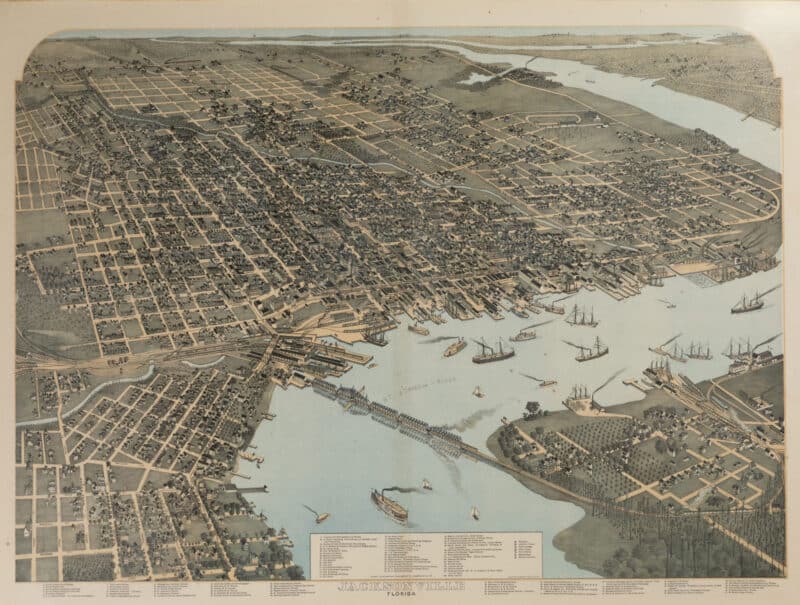
Bird’s Eye View, “Jacksonville, Florida, 1893”
Augustus Koch
Born in Germany, Augustus Koch immigrated to the United States and became one of the most prolific engravers of birds’ eye view aerial maps, panoramic city views. In this example, Koch depicted Jacksonville as a city still in development. The map shows the St. Johns River as it flows south toward downtown Jacksonville which is depicted in the foreground. Based on the map’s details, downtown Jacksonville was already a sizable city district. Streets and views of downtown Jacksonville and the Brooklyn district—Acosta Bridge, Riverside Avenue, and Bay Street—appear nearly the same in 1893 as they do now. Today, South Main Street extends to the southern bank of the St. Johns River until the John T. Alsop Jr. Bridge. Yet this map shows Jacksonville’s south bank as still undeveloped.
